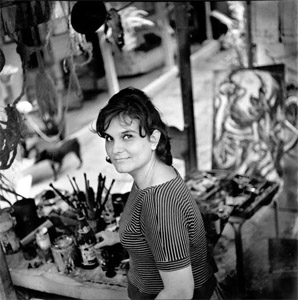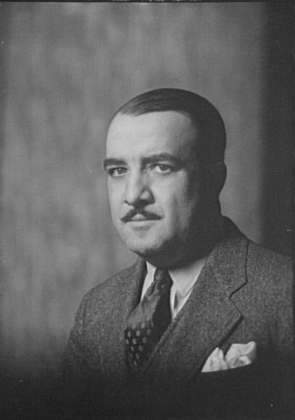The Florida group was an avant-garde literary-artistic group created in the 1920s in Buenos Aires, known by their embracing slogan "art for art's sake". The name refers to Florida Street, the location of a favored meeting point, the Richmond tea room.
Martín Fierro was an Argentine literary magazine which appeared from February 1924 to 1927. It was one of the leading avant-garde magazines in the country.
Cuban literature is the literature written in Cuba or outside the island by Cubans in Spanish language. It began to find its voice in the early 19th century. The major works published in Cuba during that time were of an abolitionist character. Notable writers of this genre include Gertrudis Gómez de Avellaneda and Cirilo Villaverde. Following the abolition of slavery in 1886, the focus of Cuban literature shifted. Dominant themes of independence and freedom were exemplified by José Martí, who led the modernista movement in Latin American literature. Writers such as the poet Nicolás Guillén focused on literature as social protest. Others, including Dulce María Loynaz, José Lezama Lima and Alejo Carpentier, dealt with more personal or universal issues. And a few more, such as Reinaldo Arenas and Guillermo Cabrera Infante, earned international recognition in the postrevolutionary era.

Guillermo Barreto was a Cuban drummer and timbalero. He was a major figure in the Cuban music scene for more than fifty years and one of the first drummers in Cuba to play Afro-Cuban jazz.

Carlos Enrique Prado is a contemporary Cuban artist recognized for his contributions to the fields of ceramic sculpture and public art. Currently residing in Miami, Florida, Prado is actively engaged in both the creation of his art and the sharing of his expertise as a professor at the University of Miami in Coral Gables. His artistic endeavors span various mediums, including sculpture, ceramics, drawing, digital art, performance, installations, and interventions, showcasing versatility and creativity throughout his career. One of his notable recent achievements is the completion of the Ronald Reagan Equestrian Monument, a major public sculpture commissioned by Miami-Dade County and situated at the Tropical Park in Miami, Florida. In 2023, Carlos was selected as a member of the International Academy of Ceramics (AIC/IAC) based in Geneva, Switzerland. His affiliation with the AIC/IAC not only signifies his international recognition but also underscores his active engagement with the global ceramics community.

Antonia Eiriz Vázquez (1929–1995) was an influential Cuban painter whose work was known for its Expressionist qualities and was exhibited throughout Latin America during her life.

Josignacio is a Cuban Contemporary artist and author. He is among the most significant living contemporary Cuban and Latin American artists due to his career auction records, paint medium innovations, and association with notable cultural events, venues, and celebrity figures in the United States and Cuba.

Tía Vicenta was a satirical current events magazine published in Argentina between 1957 and 1966. Created by caricature artist Juan Carlos Colombres, aka "Landrú", Tía Vicenta became highly popular, being one of the most influential magazines of its genre.

Emilio Hector Rodriguez is a Cuban-American artist. His current work is abstract painting and fine art photography. He resides in Miami, Florida, USA. Rodríguez was born in the colonial village of Sancti Spíritus, Cuba, in 1950. His family moved to La Habana in 1953. He started drawing and experimenting with oil paint and tempera at the age of 12. While a student at the Instituto Pre-Universitario de Marianao, he participated in several workshops sponsored by San Alejandro Arts Academy.
Isabel Margarita Ordetx y Cruz Prieto was a Cuban writer, poet, and feminist activist. She contributed to various publications of her country as a chronicler, including Heraldo de Cuba, La Discusión, El Fígaro, la Bohemia, América, Las Antillas, and Arte. Revista Universal.
Sarah Méndez-Capote y Chaple was a Cuban writer, poet, translator, suffragist, and feminist activist. She was the sister of writer Renée Méndez Capote.

Bohemia Magazine , is a Spanish language illustrated magazine based in Havana, Cuba, that was founded in 1908. It is the oldest general consumer magazine in Cuba, and the oldest magazine in all of Latin America. It provides articles relating to political commentary, long-form journalism, history, historical analysis, and fashion advice. It claims to be the first magazine to publish the work of Cuban artists in full color.

The Iglesia de San Francisco de Paula, Havana is part of the ecclesiastical heritage of Havana. It is located at 110 Calle Leonor Pérez on the corner of Calle San Ignacio. It is near the bay on the south side of Havana Vieja."

Agustín Acosta y Bello (1886-1979) was a Cuban poet, essayist, writer and politician. Acosta is considered by historians to be one of the most important Cuban writers of the twentieth century, and one of the three most important poets in the entire history of Cuba. Acosta was a revolutionary activist, and his poetry reflected his Cuban nationalism. He was both the National Poet of Cuba and also one of its Senators, when the Republic still existed. He won awards for his poetry, but also spent time as a political prisoner for criticizing the Cuban President. He lambasted the hegemonic powers of the United States in the Caribbean, but also went into exile there in the last years of his life.

Conrado Walter Massaguer y Diaz was a Cuban artist, political satirist, and magazine publisher. He is considered a student of the Art Nouveau. He was the first caricaturist in the world to broadcast his art on television. He was first caricaturist to exhibit on Fifth Avenue. He was the first caricaturist in the world to exhibit his caricatures on wood. He, and his brother Oscar, were the first magazine publishers in the world to use photolithographic printing.

Eduardo Abril Lamarque was a Cuban and American caricaturist, cartoonist, artist, designer, and magazine publisher. He also engaged himself as a stage magician and as a music conductor. Lamarque was an innovator in the arts of typography, magazine layout and design, and caricature creation. He was the first person in the world to create, draw, and distribute a comic strip entirely in the Spanish language. Prior to this, Spanish language comic strips had only been translations of comics from other languages. In the 1920s, Lamarque was considered one of the top ten greatest cartoonists living in the United States. Lamarque also invented entirely new forms of art, such as his infamous radiocatures, genre forms of cartoons, and a new style of caricature he called the composacature. He is considered to be a follower of the Bauhaus movement.

José Manuel Acosta y Bello was a Cuban painter, photographer, cartoonist, sculptor, and artist. He graduated with first letters from a Catholic Seminary. After graduating, he became a clerk of an "old style" business house, commission agent, bookkeeper, used car salesman, alcohol tax inspector, and failed business shareholder.

Carteles was a Cuban magazine created by the famous brothers Oscar H. Massaguer and Conrado Walter Massaguer, who had already created the successful magazine Social. Carteles overtook Social, however, and gained the widest circulation of any magazine in Latin America. It became the most popular magazine in Cuba for a time, until that title was claimed by Bohemia. This magazine showcased Cuban commerce, art, sports, and social life. In the early half of the twentieth century, when Cuba was still a republic prior to the communist revolution, Carteles was immensely popular with the Cuban middle class. For most of its existence, it was helmed by the director Alfredo T. Quiléz.

Emilio Roig de Leuchsenring was a prominent Cuban journalist whose work occupied the first half of the twentieth century, prior to the Cuban Revolution. He was also a historian, who has published over one hundred books on history. He created the Office of the Historian of Havana, and managed the Havana History Notebooks. He was also the director of Carteles for a time. Because he was born and died in the month of August, Cubans have given him the slogan: "Agosto le pertenece a él."

El Fígaro was a Cuban magazine published in Havana from 1885 to 1929, with irregular publications continuing until 1933. It began as a sports magazine, but evolved into a more general interest consumer magazine and became "the driving force of the Cuban press and of national culture." El Fígaro included sections on theatre, literature, music, and current affairs. Many of Cuba's early revolutionary writers, poets, painters, artists, journalists, and activists contributed to this magazine.
















